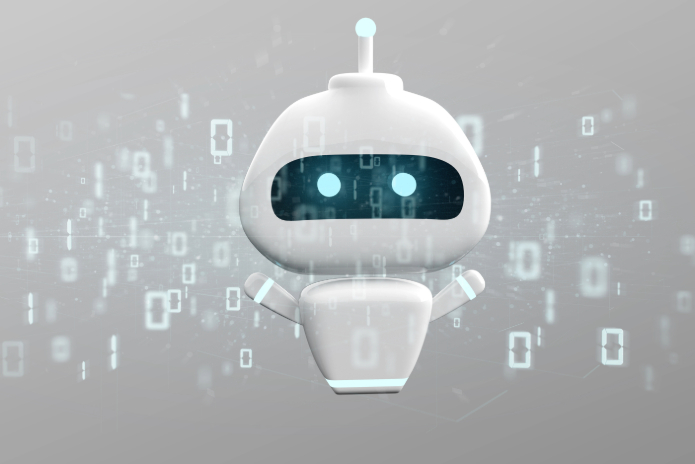While the corporate world still celebrates the advances of Generative Artificial Intelligence (AI), a quiet revolution is taking shape in the labs of OpenAI, Microsoft and other tech giants.The expected launch of ChatGPT-5 in August marked not only an incremental evolution, but the beginning of a new era: the transition of Generative AI for a AI Decisionthis paradigm shift promises a new leap, one that is able to completely redefine how companies operate, compete and create value in the global marketplace.
Confirmation of the launch of ChatGPT this month, after strategic delays, represents much more than a software update.We are witnessing the birth of systems capable of structured analytical reasoning, complex decision making and autonomous operation in business environments.Different from current models that simply generate content based on prompts, producing text or images, new systems that demonstrate metacognition and critical thinking capabilities, which dangerously bring them closer to human intelligence in specific domains.
The difference now is that we no longer talk about tools.We talk about agents. And, with this, the concept of Context Engineering comes into play - the art and science of providing AI with the right knowledge at the right time, in the right way. Some important organizations have already publicly validated this new field, which proves essential to build trust, autonomy and relevance in agent interactions. After all, an agent only decides well when he understands in depth the environment in which he operates.
But it is not just about technique, but the adoption of decision AI faces the crucial challenge of trust study27% of executives fully trust autonomous agents. This gap is reduced between companies that move to implementation phases, indicating that trust is built in practice, through security, transparency and governance. And what is observed is that, alongside humans, agents deliver more value: 65% more engagement in high-impact tasks and 53% more creativity, according to the same study.
In laboratories, indications are positive amid executive mistrust search MIT pioneer on Self Adapting Language Models (SEAL) perfectly illustrates this evolution. For the first time in AI history, we have models capable of generating their own training data and update procedures, creating a virtuous cycle of continuous learning. This self-improvement capability represents a fundamental qualitative leap: while traditional Great Language Models (LLMs) remain static after training, new systems continually evolve based on experience, mirroring human cognitive processes.
The key, therefore, is in balance.Agents will not replace teams, but will enlarge them.The revolutionary concept of Chain of Debate (Chain of Debates, in free translation), presented by Mustafa Suleyman of Microsoft AI, exemplifies how multiple AIs can collaborate to produce results superior to the individual capacity of each system MAI Diagnostic Orchestrator it demonstrated diagnostic accuracy four times that of human physicians, not through computational brute force, but via structured collaboration between specialized agents.This approach signals the future of enterprise operations: hybrid teams where multiple AI agents work together to solve complex business problems.
The emergence of Context Engineering as a central discipline reveals the growing sophistication of these systems. It is no longer about writing effective prompts, but about building complete informational ecosystems that allow agents to understand contextual nuances, maintain temporal coherence and make decisions based on deep knowledge of the operational environment. This evolution transforms AI from an automation tool to a cognitive partner capable of independent reasoning.
However, one search it reveals an intriguing paradox: while the economic potential of AI agents can generate up to US$ 450 billion in value, business confidence in these systems has declined dramatically. An apparent contradiction hides a fundamental strategic truth: organizations that succeed in solving the trust-autonomy equation will first gain disproportionate competitive advantages. Successful transition requires not only technological investment, but deep organizational redesign and development of new AI governance competencies.
Like every technological revolution, there are risks. Recent studies show that AIs can absorb biases from other AIs in training processes (a phenomenon known as “subliminal learning”. This requires constant technical vigilance, especially in cycles of refinement and use of synthetic data.But it also paves the way for a new discipline: how to guide these unexpected capabilities toward desired outcomes?The answer will be essential for CEOs who intend to integrate AI in an ethical and scalable way.
THE frameworks OECD capabilities offer by establishing clear levels of AI competence in domains such as language, problem solving and creativity, companies can now objectively assess where to invest resources and which processes are ideal candidates for intelligent automation.
The window of opportunity is opening rapidly, but will not remain open indefinitely.Companies that understand that we are transitioning from generative tools to autonomous cognitive partners, who invest in Context Engineering and develop skills in multi-agent systems, will position themselves as leaders of the next decade.
This second wave of AI that is underway is no longer about generating content, but about making smart decisions. Winners will be defined not by the speed of adoption, but by the depth of strategic integration of these new cognitive paradigms into their core operations.And in this sense, CEOs who understand that the value of decision AI lies in symbiosis with people, Context Engineering, and proactive governance will have a lasting strategic advantage.
It is no longer about talking to machines, it is about building goals and solutions with them.


